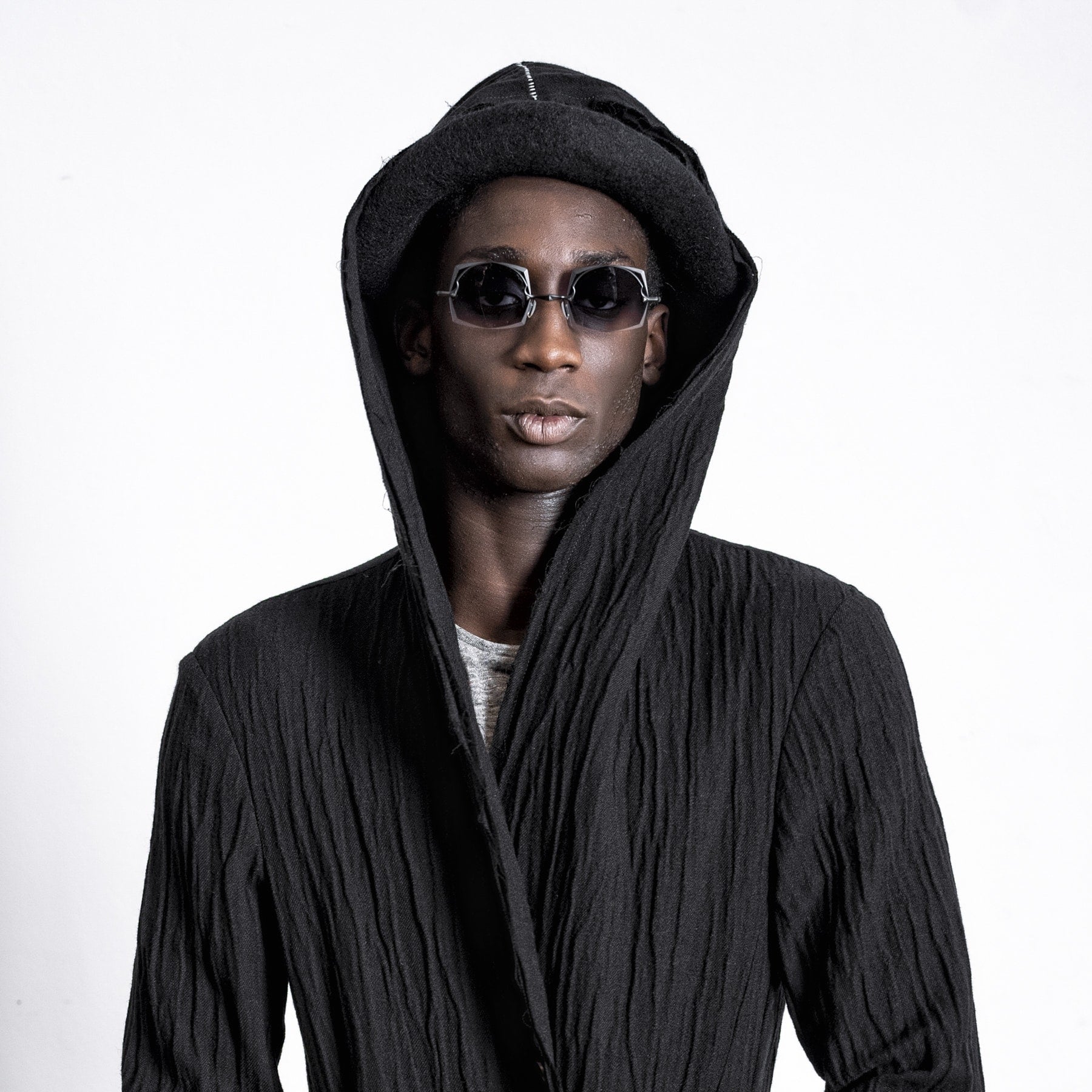Black - Avant-garde fashion's favorite color
Why is black the color of the avant-garde, the existentialists, the intellectuals and the most popular color in fashion?
Black is full of contradictions – the color that isn’t one. It is achromatic and characterized by something that is not there: it is the complete absence of light. It is inhabited by many strong, contradictory attributes and attributions: evil, mourning, melancholia. Elegance, understatement, poetry. Arrogance, minimalism, existence itself.
These attributions and associations vary not only from person to person, but also depend on context and culture. In Japan, for example, the color of mourning is white.
„Black is modest and arrogant at the same time. Black is lazy and easy - but mysterious. But above all black says this: ‚I don’t bother you - don’t bother me‘.” - Yohji Yamamoto
Black is the color of the existentialists
When Jean-Paul Sartre and Simone de Beauvoir debated with Albert Camus and Maurice Merleau-Ponty in the smoke-filled Parisian cafés of the 1930’s, cursing the bourgeoisie and planning their revolt, they usually wore black. They also did so in other contexts, because they did not want the person they talked to, the “other”, to be distracted by outward appearances; what mattered were their ideas, their contents and their ideals – as well as personal freedom, individuality within the community and responsibility to oneself and others.
In the USA in the 1960s, the civil rights organization Black Panther Party rebelled against oppression and police brutality. For her performance at the 2016 Super Bowl, Beyoncé draped her background singers in black leather uniforms and berets as a tribute to the Black Panthers. “Okay, ladies, now let’s get in formation.” Some battles must be fought for many decades.

The black of the existentialists is also the black of the avant-garde, of intellectuals, of creative minds
Avant-garde fashion designers such as Yohji Yamamoto, Comme des Garçons, Rick Owens, Carol Christian Poell (CCP) or Issey Miyake preferably drape their conceptual creations in black. The latter is also responsible for late Apple co-founder Steve Jobs’s mock turtleneck sweater. Jobs is said to have owned about a hundred pieces of the same model designed by Miyake.
There probably is no architect who does not own a black turtleneck sweater. Almost every cliché has a kernel of truth. What do Jobs and the architect want to say with their choice? It is not about me, but about what I am going to build? I want to step back and focus on what I do rather than what I am? Possibly.
But it may also be the opposite. Psychologist Max Lüscher attributes a certain coolness, hardness, lack of emotion and “an obstinate craving for admiration” to people with an affinity to black. Black is modest and arrogant at the same time, as Yamamoto so aptly put it. It imposes itself by maintaining a low profile.
Discover the what, how and why of avant-garde and delve deeper into our essay on the style, design and concept of dark fashion.
Black is also universal and individual
It cannot be placed in any drawers or registers. It is androgynous, masculine and feminine at the same time. It directs attention to the design, the cut, the silhouette. It lets the wearer’s personality shine through, lets the contents of his or her mind take center stage and is at the same time dense, intense, full.
It is complete darkness and therefore an ideal projection surface: where we cannot see anything, we can assume everything. What we see, then, probably tells us more about ourselves than about the color.
Is black a mirror?

Night absorbs all colors
"On black mountains, black animals are black, German historian Johann Galletti said. There is a reason why the most famous square in the history of art is black: with his Black Square (1915), Russian artist Kazimir Malevich wanted to “free art from the ballast of objectivity”, just like the existentialists wanted to free people from the ballast of external appearances and the zeitgeist.
Another artist who liked to use black in his paintings was Lucio Fontana. To him, black was the color of endings and beginnings at the same time.
Out of the dark, into the dark.
The question is: The ending and the beginning of what? Of the world? Of life?
Is black a color?
“Black is the new black,” journalist Barbara Vinken writes in the NZZ. It enjoys a unique position among all the colors; it is a meta-color, it is apart, it is always appropriate. And it is not only characterized by the absence of light, but also by the absence of another quality: time. In black, time is just as absent as light
Black is a paradox, a chameleon without colors.
It is timeless and therefore never the expression of any particular zeitgeist. It represents duration, stability, silence in a world that cannot help accelerating itself all the time. It therefore offers a kind of security; it provides protection, wraps itself around people like a warm coat when they feel fragile. Mothers in India apply black kohl to their children’s eyes in order to protect them from the “evil eye”.
At the same time, it represents the exact opposite to many people. “Blackness possesses an immense range of negative and fearful associations: death, the underworld, the void, blindness, night stalked by robbers and ghosts,” historian Jeffrey Burton Russell writes.
Black is mysterious, unpredictable, it is the color of evil, of depression (as in the metaphor “black dog”), of mourning: In black fabrics, heavy emotions are allowed to drown themselves. It is the color of abysses – both in space (“black holes” and “dark matter”) and in life (“dark night of the soul”).
Musician Amy Winehouse, who died much too young, went “back to black” – back to her own abysses, which became even darker and deeper and colder and more unbearable after bathing in the (too?) euphoriant ocean of love. “It’s easier to fall if you’re closer to the floor,” says a line in singer-songwriter Charlie Cunningham’s song “Lights Off”. Will we eventually get used to the darkness? Will it reveal something about ourselves as soon as we stop fearing it?
Expand your reading experience to discover the perfect all-black outfit for every occasion - Our Guide to Black Designer Fashion.

Black is a paradox, a chameleon without colors. It confidently represents itself, and yet it can be filled and charged with other things. It is autonomous, but at the same time it needs a wearer. It does not interfere, it does not pretend.
It simply says, “I don’t bother you – don’t bother me.” It is and lets be. With great noblesse. With utmost discretion.
Black is poetry without words.

